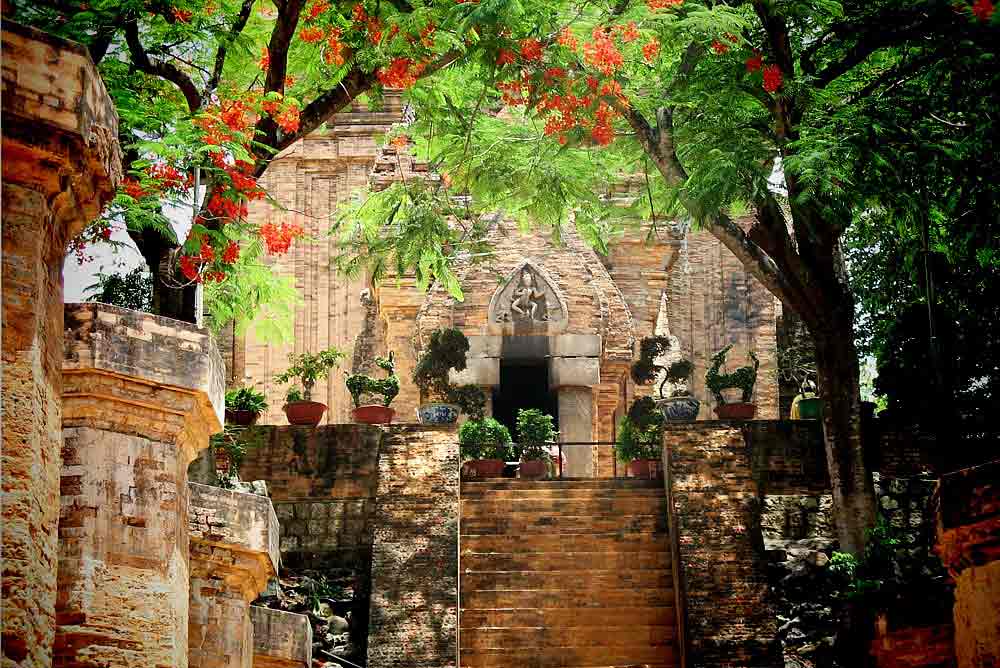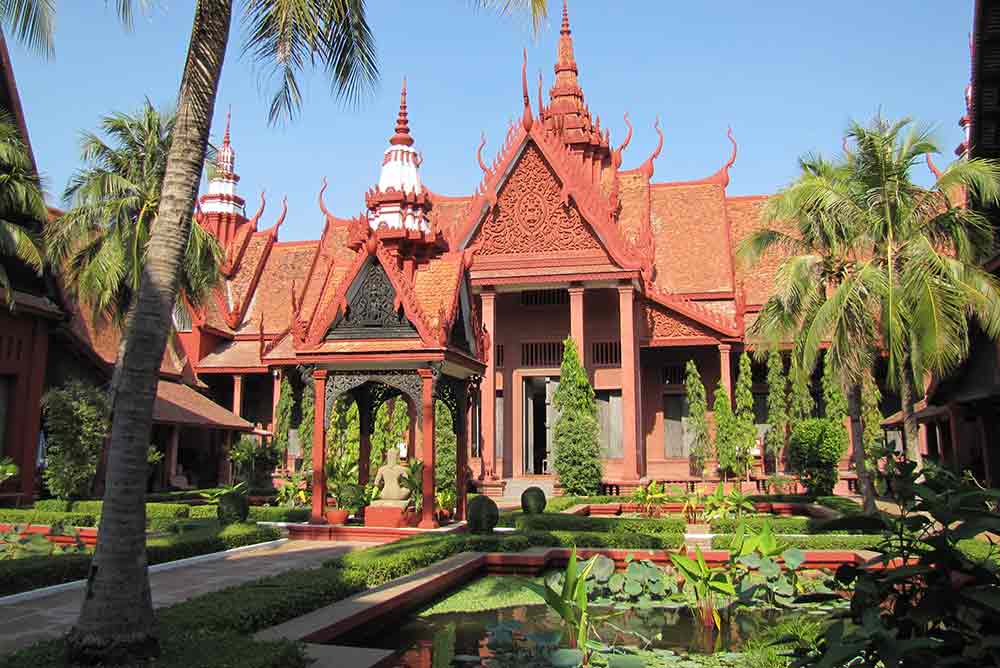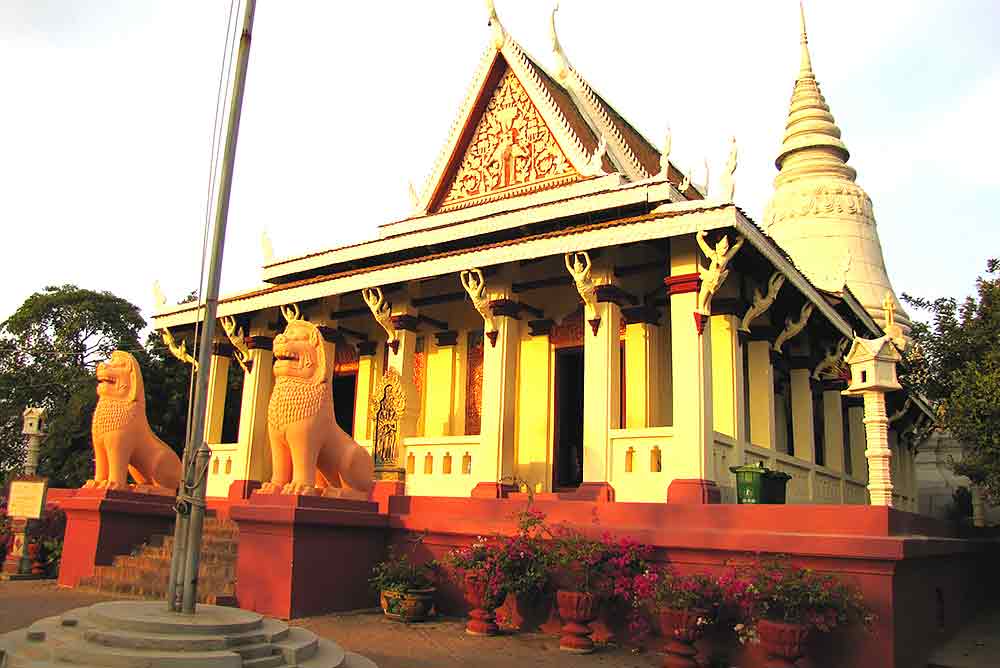If you’re looking for the best things to do in Nha Trang, you will be happy to know that Nha Trang is a coastal city in Vietnam that offers a unique blend of natural beauty, cultural heritage, and modern amenities.
Located in the south-central region of Vietnam, Nha Trang is a popular tourist destination that attracts visitors from all over the world. From its stunning beaches and crystal-clear waters to its bustling markets and ancient temples, there are so many things to see and do in Nha Trang.
The best way to get to almost all popular attractions in Nha Trang can is to take a day tour, usually available for booking at your hotel. Check with your desk agent or concierge to see what tour options they have available for you.
Let’s explore the six best things to do in Nha Trang, from outdoor adventures to cultural experiences and everything in between. Whether you’re a first-time visitor or a seasoned traveler, there’s something for everyone in Nha Trang. So, grab your sunscreen, pack your bags, and let’s explore this amazing city!
Long Son Pagoda
The Long Son Pagoda is a beautiful and serene Buddhist temple located in the coastal city of Nha Trang, Vietnam. It’s a popular destination and a great activity for you to enjoy while visiting the city. Here you can enjoy a peaceful respite from the hustle and bustle of the urban center.
The temple is best known for its impressive white Buddha statue, which stands at over 80 feet (24 meters) tall and can be seen from throughout the city. Be sure to climb the steps to the base of the statue, where you can enjoy stunning views of the city and the surrounding mountains.
The Long Son Pagoda also features an array of beautiful architectural features, including intricate carvings and colorful murals.
The Long Son Pagoda also features an array of beautiful architectural features, including intricate carvings and colorful murals. There are also numerous smaller shrines and pagodas throughout the temple complex, from which you can explore and learn more about the Buddhist religion and its practices.
The temple is best known for its impressive white Buddha statue, which stands at over 80 feet (24 meters) tall.
In addition to its spiritual significance, the Long Son Pagoda is also an important cultural landmark in Nha Trang. It has been a center of religious and cultural life in the city for over a century, and its stunning architecture and serene atmosphere make it a must-visit destination for anyone traveling to the region.
Po Nagar Cham Towers
The Po Nagar Cham Towers are a fascinating and historic collection of ancient temples located on the outskirts of Nha Trang, Vietnam. Built by the Cham people between the 7th and 12th centuries, the towers are an important archaeological and cultural site, offering you a glimpse into the region’s rich history.
The towers are constructed of stone and feature intricate carvings and sculptures, many of which depict Hindu gods and goddesses. You can explore the various towers and learn more about the Cham culture and their religious practices.
One of the most impressive aspects of the Po Nagar Cham Towers is the beautiful setting. The towers are located on a hill overlooking the Cai River, offering stunning views of the surrounding landscape. Here you can enjoy a peaceful and serene atmosphere as you explore the towers and take in the natural beauty of the area.
The Po Nagar Cham Towers are a must-visit destination if you are interested in the history and culture of Vietnam. The ancient temples offer a unique perspective on the country’s past and its rich and diverse religious traditions.
Whether you’re a history buff or simply looking for a beautiful and peaceful place to visit, the Po Nagar Cham Towers are definitely worth a stop on your travels through Nha Trang.
At one time, there were eight towers at Po Nagar, but today only four remain intact.
I find the Cham culture to be intriguing and mysterious, so coming to Po Nagar is an interesting experience and a great place to tour these magnificent ruins.
Enjoy Nha Trang’s Stunning Beaches
Nha Trang, a coastal city in Vietnam, is known for its stunning beaches that attract tourists from all over the world. The city boasts a long stretch of coastline, which features numerous beaches, each with its own unique charm.
One of the most popular beaches in Nha Trang is Tran Phu Beach, which runs along the main road of the city. This beach offers a lively atmosphere with plenty of activities, including water sports, beach volleyball, and restaurants and bars. It is a great spot for those who want to enjoy the sun and sea while also having access to modern amenities.
Another favorite not to miss is Nha Trang Beach, which is the largest and most well-known in the city. This beach features fine, white sand and crystal-clear waters that are perfect for swimming and snorkeling. You can also take a boat out to nearby islands for some secluded beach time.
For those who prefer a more secluded beach experience, Bai Dai Beach is a great choice. Located on a peninsula just south of Nha Trang, Bai Dai Beach is known for its pristine natural beauty, with clear waters and soft, white sand. It is a bit further from the city, but the trip is well worth it for those looking for a more serene and peaceful beach experience.
Overall, Nha Trang’s beaches are a must-see destination for anyone traveling to Vietnam. With a range of options to suit different preferences and personalities, Nha Trang’s beaches offer something for everyone.
See the Coast on a Boat Tour
One of the most popular and enjoyable ways to experience the beauty of Nha Trang is by taking a boat tour. Boat tours in Nha Trang offer you the chance to explore the city’s stunning coastline, crystal-clear waters, and picturesque islands.
There are many different boat tours available in Nha Trang, catering to all interests and budgets. From luxurious private charters to more affordable group tours, there’s something for everyone. Some of the most popular boat tours include snorkeling and diving trips to explore the vibrant marine life of the area, visits to nearby islands, and sunset cruises.
While on a boat tour, you can take in stunning views of Nha Trang’s coastline, with its towering cliffs, secluded bays, and hidden beaches. They can also get up close and personal with the local wildlife, such as dolphins and sea turtles, and learn about the area’s rich cultural history from experienced local guides.
While on a boat tour, you can take in stunning views of Nha Trang’s coastline and hidden beaches.
One of the most enjoyable aspects of taking a boat tour in Nha Trang is the dining options available. Many tours offer on-board dining experiences, where you can enjoy a delicious meal while taking in the beautiful views of the coastline. The menus typically include fresh seafood and local specialties, such as grilled squid, steamed clams, and fresh shrimp.
If you are looking for a more unique dining experience, some tours offer the chance to visit local fishing villages, where you can watch the locals prepare fresh seafood dishes and enjoy a meal in the company of the friendly and hospitable villagers.
Overall, taking a boat tour in Nha Trang is a must-do activity for anyone visiting this beautiful city. With its stunning coastline, crystal-clear waters, and excellent dining options, it’s the perfect way to experience the natural beauty and local culture of Nha Trang.
Ba Ho Waterfalls
The Ba Ho Waterfalls are a beautiful and natural wonder located just outside of the coastal city of Nha Trang, Vietnam. The name “Ba Ho” means “three lakes,” and the waterfalls are so named because of the three natural pools that form at different levels of the falls.
You can hike through the lush jungle surrounding the falls and swim in the cool, clear waters of the pools. The trek can be a bit challenging, with some steep and rocky areas, but it’s definitely worth the effort for the stunning views and natural beauty.
One of the highlights of the Ba Ho Waterfalls is the natural rock slides that have formed over time. You can slide down the smooth rocks and into the refreshing pools below, making for a fun and unique experience.
The waterfalls are also a great place for nature lovers, with an array of local flora and fauna to discover. You can see a variety of tropical plants and flowers, as well as birds and other wildlife that call the area home.
If you’re looking for a break from the city and a chance to connect with nature, the Ba Ho Waterfalls are definitely worth a visit. The stunning scenery, natural pools, and fun rock slides make for an unforgettable experience, and the chance to explore the beautiful jungle surroundings only adds to the adventure.
The waterfalls are also a great place for nature lovers, with an array of local flora and fauna to discover.
Ba Ho waterfalls are located about 14 miles (23 km) north of the city. The route there takes you through some interesting villages, but part of the road is a little rough.
However, it’s worth it to see these unspoiled waterfalls. The falls are incredibly picturesque, and the area is peaceful and relaxing. There is a parking area near the falls, where you can buy drinks and restrooms are available. From the parking area, there are arrows to guide you to the falls.
Part of the walk is a fairly steep climb. It’s nothing to be concerned about if you are in good physical condition. Be careful, though, if you have any health issues. Most visitors stop at the first pool, as getting to the second, and especially the third, is particularly challenging.
Vinpearl Land
Vinpearl is a huge company started by a Vietnamese billionaire. Vinpearl Land is a resort/amusement park situated on an island that was once used as a jail.
Vinpearl Land place is different from most other things to do in Nha Trang. It’s unique and interesting and is especially appealing if you like theme-park-type attractions.
This place is different from most other things to do in Nha Trang. It’s unique and interesting and is especially appealing if you like theme-park-type attractions.
The island is accessible only by ferry at this time. There once was cable-car service, but when we were in Nha Tran in July 2022, it was not operating and in fact seemed to have fallen into disrepair.
So, I doubt the service will be back in operation any time soon. The cable car was, at just over two miles (3.3 km) in length, the longest over-water cable system in the world.
Vinpearl has a festive atmosphere and is a great place to take the family. There is a respectable aquarium, a shopping mall and food court, a water park, and outdoor games area. In 2008, the Miss Universe pageant was held here, a fact that still gets mentioned in marketing and promotional materials to this day.
How to Get to Nha Trang
Overnight sleeper buses depart from Ho Chi Minh City’s Pham Ngu Lao area nightly at 8:30. One-way tickets run about US$11.00. The two main carriers I recommend are Phuong Nam (FUTA) and Sinh Tourist. I actually prefer Sinh Tourist, but I will use Phuong Nam if Sinh is not offering a departure time that I want.
Both stations are located near the end of De Tham Street near the September 23 Park in District 1.
Vietnam Airlines also runs flights from Ho Chi Minh City to Cam Ranh International Airport, the closest to Nha Trang. Tickets are about US$145 for the one-hour flight. You can check for prices and book your flight tickets from a site where you can get the best prices on flights, departure times, etc.
Accommodations in Nha Trang
There is a wide range of hotels, resorts, and guest houses in Nha Trang. Whatever your taste, you are likely to find something to suit your style and your budget. The closer you are to the beach, the more expensive the accommodation is going to be.
Prices are also highly dependent on the season, with summers and the Lunar New Year seasons being the highest. You can use a hotel booking service like Agoda, where you may often find rooms for much cheaper than if you used the hotel’s website or a travel agency. This is always advisable, as sometimes accommodations book up fast.






































